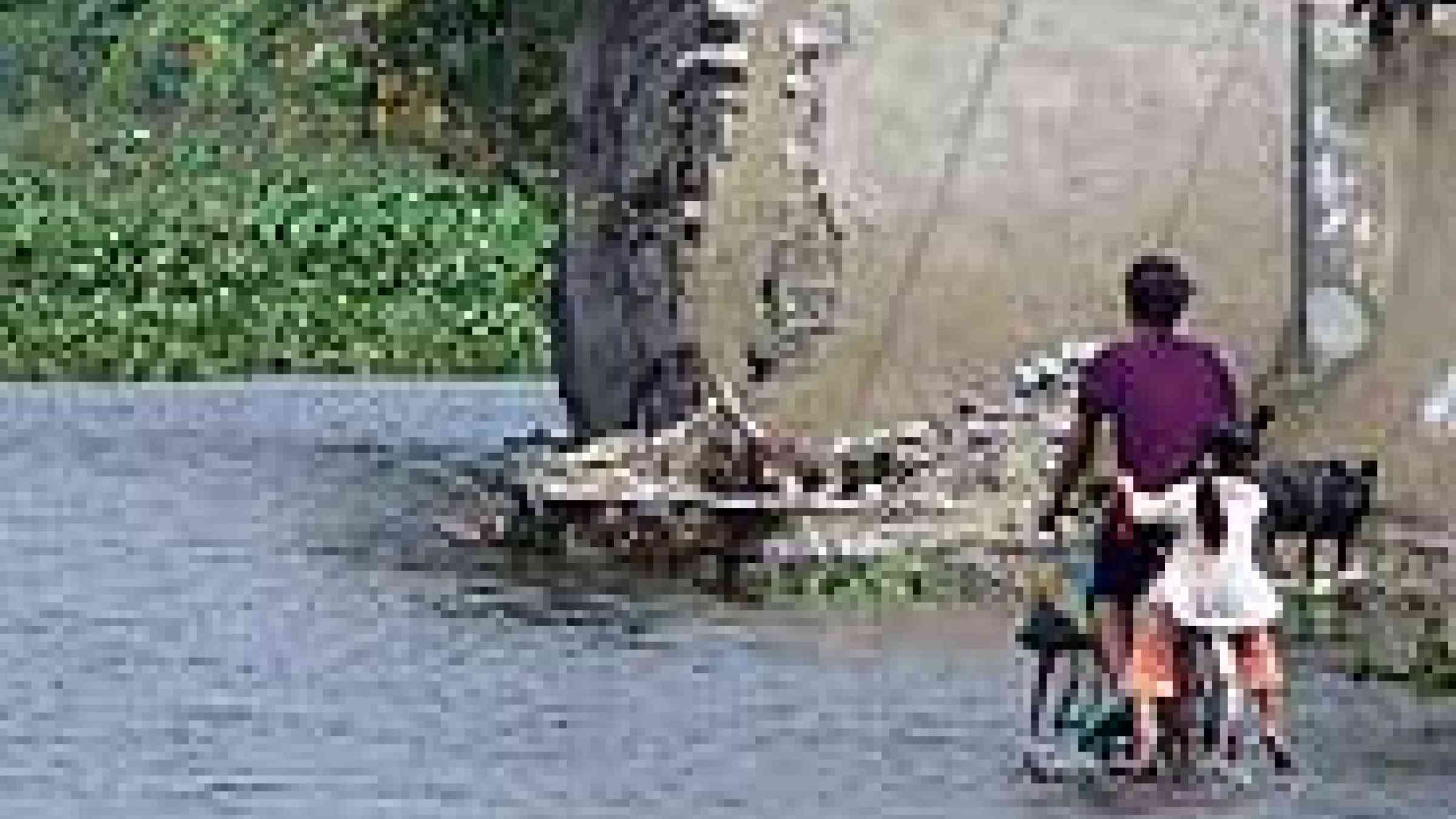Please help us improve PreventionWeb by taking this brief survey. Your input will allow us to better serve the needs of the DRR community.
Vietnam: New threat of flooding in south

Photo by Flikr user Simon & Viki, Creative Commons Attribution-Noncommercial 2.0 Generic
Aid officials say emergency supplies have reached nearly all of those affected by recent heavy flooding in northern Vietnam. But as clean-up efforts continue, the country faces a fresh assault as river levels rise dangerously in the south.
“Because of global warming, Vietnam is experiencing more floods and disasters,” said Setsuko Yamazaki, director of the UN Development Programme, addressing an inter-agency briefing this week on the damage done by the latest storm.
A total of 133 people were killed and 34 are missing after tropical storm Kammuri hit Vietnam 7-9 August, government officials said. Many residents died in their sleep when mudslides crushed their homes. Large swaths of rice fields were literally swept away, taking with them families’ livelihoods.
In the province of Lao Cai, 18 percent of farming land was destroyed, said Tran Van Tuan, manager of the Natural Disaster Mitigation Partnership, which is coordinating with national and international non-governmental organisations (NGOs) and donors to respond to the humanitarian emergency.
Inter-agency assessment teams made up of NGOs, UN agencies, and government experts were dispatched to the hardest hit provinces after the floods hit. At a meeting in Hanoi on 20 August the teams reported that most of the floodwaters had receded and short-term relief was getting to villages previously cut off from aid.
The flood-proof embankment at Donh Kenh Ba residential cluster will protect the 140 families who live there from storm surge and heavy, sustained flooding that earlier eroded the banks and put their homes and lives at risk.
18,000 homes damaged
But in order to repair more than 18,000 damaged houses and clean out 19,000 hectares of rice fields, longer-term aid will be needed, stressed the assessment teams.
“The government has been very active in helping victims,” said Luu Quang Dai of the NGO Plan International who recently returned from surveying the damage in Phu Tho Province. “But the area is too much. It will take more than a year to recover. [In that time] many people will fall below the poverty line.”
There were also concerns that many children will not be able to attend school this autumn. The government said 165 classrooms had collapsed or were washed away. At least 100 more are filled with rocks and mud. The assessment teams said families devastated by the storm would also have a difficult time paying tuition fees or buying books.
Early warning systems
Heavy monsoon rains and flooding are a normal part of Vietnam's weather system. But extreme weather patterns in which storms are arriving earlier and lasting longer are having increasingly deadly effects, according to Vietnamese disaster preparedness officials.
In some areas, early warning systems have been installed to alert residents to evacuate. But when the waters rose, many of the alarms failed to go off.
"We do have some flood warning devices," said Le Thanh Du, deputy director of the Agriculture and Rural Department for Lao Cai Province. "It's just a pilot programme and it didn't work well. On that day, the electricity was cut off so the bell did not ring to warn the local people. I think if we have a comprehensive flood warning system, people living in flood areas could evacuate before the floods come."
Bracing for floods in south
As the northern provinces struggle to recover from the storm, 1,500km to the south, farmers in the Mekong Delta are bracing for a deluge of water dumped by the tropical storm days earlier in Laos and Cambodia. The water, which hit record levels in those countries, is flowing rapidly down the Mekong river into southern Vietnam.
“The water level is now at 3.3m and rising 7-8cm a day,” Nguyen Van Khang, director of Agriculture and Rural Development in Tien Giang Province, told IRIN on 23 August. “The biggest threat now is that the flood coming from upstream could be combined with high tides.”
Most of the summer rice crop has already been harvested, assuaging fears that the floodwaters will cause any immediate economic damage to Vietnam’s rice basket. But preparations were under way to evacuate some 1,200 people if the waters rise much higher, noted Khang.
Unlike northern and central Vietnam, the Mekong is not subject to flash floods or landslides which cause most of the flood-related deaths. But when rivers burst their banks, entire villages can quickly become inundated. And, said Khang, the worst is probably yet to come: “We don’t even reach the peak of the flood season until 15 September,” he said.
mao/bj/cb
Explore further
Please note: Content is displayed as last posted by a PreventionWeb community member or editor. The views expressed therein are not necessarily those of UNDRR, PreventionWeb, or its sponsors. See our terms of use
Is this page useful?
Yes No Report an issue on this pageThank you. If you have 2 minutes, we would benefit from additional feedback (link opens in a new window).